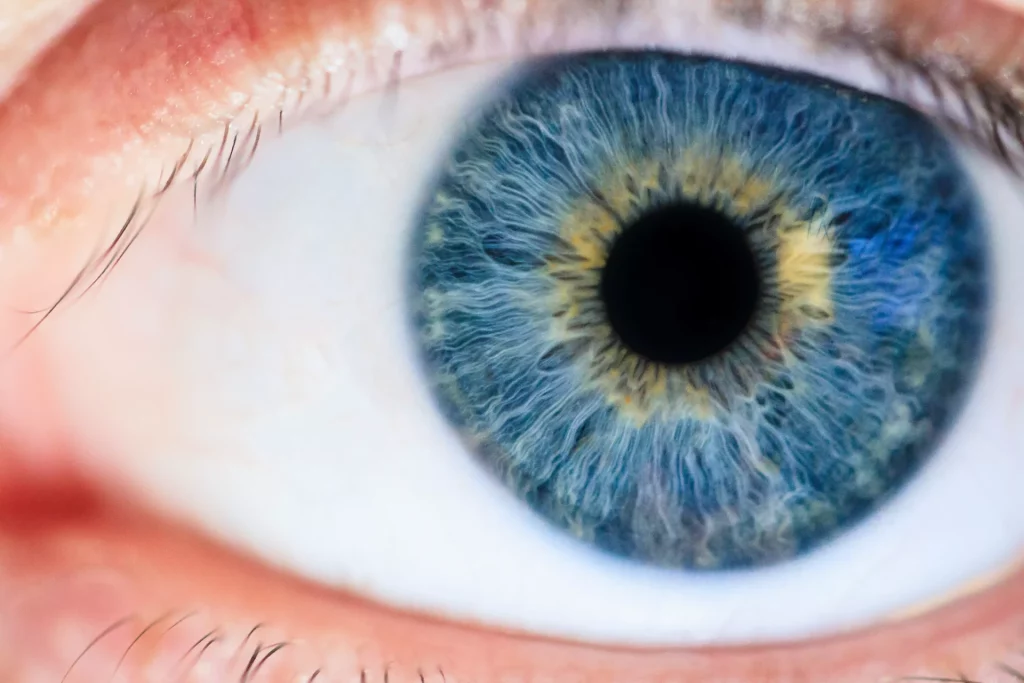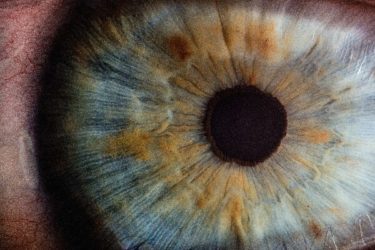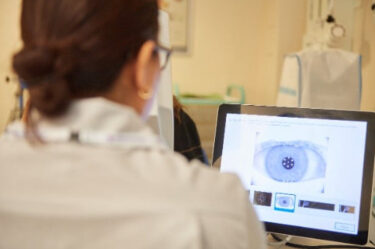What are the symptoms of cataracts and glaucoma and how can you tell the difference? In this blog, we’ll be exploring both conditions and decoding the signs of each to help you find the right type of treatment.

Glaucoma and cataracts explained
First off, let’s explore a little around what it means to have either of these eye conditions and how they differ from each other.
What is glaucoma?
Glaucoma is a condition in which there is damage to the optic nerve. This causes a loss of the peripheral field of vision and is often caused by an increase in intraocular pressure (IOP) inside the eye. Glaucoma affects around 2% of the UK over-40 population.
The different types of glaucoma include:
- Chronic Open Angle Glaucoma (COAG): this is the most common form and is caused by blocked drainage canals in the eye
- Primary angle closure glaucoma: this is rarer and causes quicker and more severe symptoms such as eye pain, nausea and headaches
- Secondary glaucoma: can be caused by other eye diseases or conditions
- Congenital glaucoma: this is a rare form that can appear in children. Symptoms include enlarged eyes, cloudiness of the cornea and light sensitivity.
What are cataracts?
Cataracts are another common eye condition that occur when the lens inside your eye becomes cloudy, affecting your ability to see. This is usually caused by ageing but can also be attributed to diabetes or the effects of steroid medication.
There are three different types of cataracts:
- Nuclear
- Cortical
- Subcapsular.
What is the difference between glaucoma and cataracts?
The different conditions affect different parts of the eye. Glaucoma affects the optic nerve, while cataracts affect the lens.
This means that the treatment is different. Glaucoma treatment involves eye drops or surgery to reduce the increase in eye pressure. Cataract treatment almost always requires surgery to replace the cloudy lens with an artificial one.
Another big difference is that vision loss through cataracts can be reversed thanks to surgery. Unfortunately, this isn’t possible for glaucoma patients.
What are the similarities?
Both are common conditions that affect the eye and both can result in vision loss. Patients with diabetes also have a higher risk of developing both conditions.
Another way in which the conditions both compare and differ is through their development. Glaucoma can develop slowly or quickly depending on a number of factors, while cataracts usually develop over time.
What are the symptoms of cataracts and glaucoma?
It’s important to understand the difference in symptoms to get the right treatment and support. The following information should help to clarify the differences between the symptoms, but if you’re not sure, please speak to your doctor.
Cataract symptoms
If you have a cataract, you may experience some of the following:
- cloudy or blurred vision
- changes in colour vision
- glare
- difficulty seeing your phone or TV screen
- double vision
- sensitivity to bright light.
This is not a definitive list but gives an indication of some basic signs you may need cataract surgery.
Glaucoma symptoms
If you have chronic open angle glaucoma, there are usually no symptoms until the condition is fairly advanced. This is why it’s important to attend regular eye tests where it can be diagnosed by an eye doctor or optometrist.
The most common symptoms of primary angle closure glaucoma include:
- blurry vision
- seeing multi-coloured halos around lights
- tender, red eyes
- headache.
Glaucoma and cataracts risk factors
Having diabetes can increase your risk of developing both eye conditions, along with ageing.
For glaucoma, people with African ancestry are four times more likely to have the condition than those descended from Europeans. People of Asian descent also appear to be at increased risk for low-tension glaucoma. This is where the optic nerve is damaged even though the pressure in the eye is not very high.
The most common type of glaucoma (COAG) can be hereditary. It’s important to get regular eye checks if someone in your immediate family has the condition.
With cataracts, smoking, drinking too much alcohol, long-term use of steroids and previous eye injuries can increase your risk of developing the condition.
Diagnosing eye conditions
If you suspect that you have a cataract, a professional eye exam by your eye doctor, optician or ophthalmologist (after a referral by your GP or optometrist) will be able to diagnose it.
Similarly, glaucoma can be screened for during an eye exam by an optician.
When to have treatment
If you are diagnosed with either cataracts or glaucoma, it’s important to talk to your doctor about treatment as soon as possible. If left untreated, cataracts may lead to further vision loss that can eventually result in blindness. Most people with cataracts choose to have treatment when vision loss is affecting their quality of life and ability to perform everyday tasks.
If patients with glaucoma delay treatment, it can result in permanent vision loss. Early treatment is vital to prevent the condition from developing.
Treatment for glaucoma and cataracts
Now we know what to look out for by way of the symptoms, it’s time to explore the treatment options for both conditions.
Glaucoma treatments
The treatment options for glaucoma depend on how developed the condition is. Patients that have caught the condition early are often prescribed eye drops. These help to reduce the pressure in the eye. Glaucoma surgery is generally performed on more advanced cases to reduce the fluid that builds up in the eye. A newer treatment that can be offered to glaucoma patients is laser treatment, that improves the drainage function of the eye and reduces the dependence on drops.
Cataract treatments
Sometimes, new glasses or contact lenses can be used to correct your vision. However, if your vision loss cannot be corrected this way, your cataract will need to be removed surgically.
During cataract surgery, the old cloudy lens is removed and replaced with an artificial one. The procedure takes about 15 minutes and the vast majority of patients experience a big improvement in their eyesight.
Can you treat glaucoma and cataracts at the same time?
It is possible to treat glaucoma and cataracts at the same time through surgery. Talk to your doctor or surgeon to see if this is a possibility for you.
How to prevent cataracts or glaucoma
To date, there is no proven method of preventing cataracts or glaucoma. Maintaining a healthy diet full of leafy greens, not smoking, wearing sunglasses in strong sunlight, and regular exercise can all help reduce the risk of developing the conditions. However, the most important factor is ensuring you attend regular eye examinations. This is usually every two years for adults and annually after the age of 50.
Glaucoma vs cataracts: your questions answered
Didn’t quite find what you were looking for? Worry not – our dedicated cataracts and glaucoma FAQs can help!
No, glaucoma and cataracts are two different eye conditions. While they share some characteristics, they are different in lots of ways.
You can check out the signs and symptoms for each condition above. However, the best way to find out if you are suffering from an eye problem is to get an eye test from a qualified optometrist.
Both conditions can affect your vision and quality of life. It is important to note that vision loss through glaucoma is irreversible so ensure you attend regular eye exams to help catch the condition early.
Cataracts do not necessarily lead to glaucoma. However, both conditions can be caused by ageing so some people over the age of 60 have been known to suffer from both.
Cataract treatment for patients with glaucoma will depend on the individual and the severity of each condition. In this case, your ophthalmologist will weigh up the risks and benefits of cataract surgery to see if it is the best option.
Sometimes, cataract surgery can lower eye pressure. However, this depends on the individual patient and the severity of each condition.
This depends on the individual patient and the severity of each condition.
Cataract surgery takes around 15 minutes, while glaucoma surgery takes approximately 20 minutes.
Take the next step
If you think you may have one of these conditions, first, talk to your doctor, then explore the different eye treatments available at Practice Plus Group. Get in touch to learn more about them.






